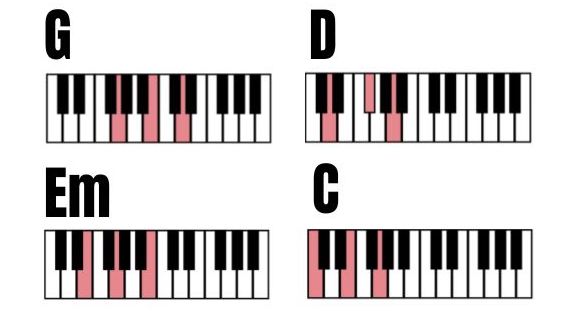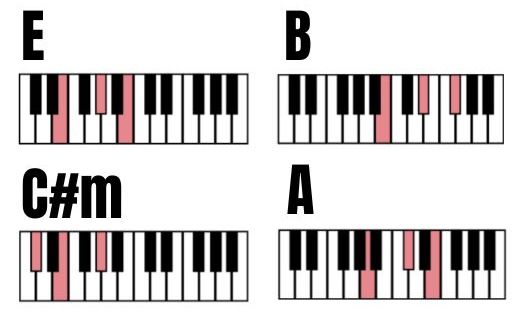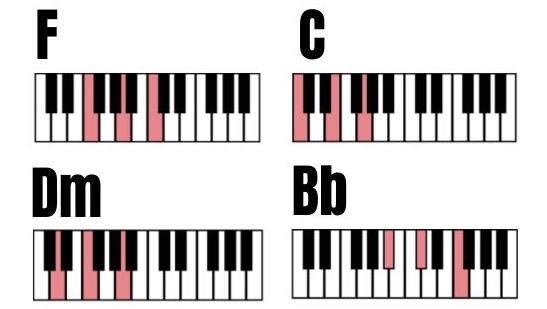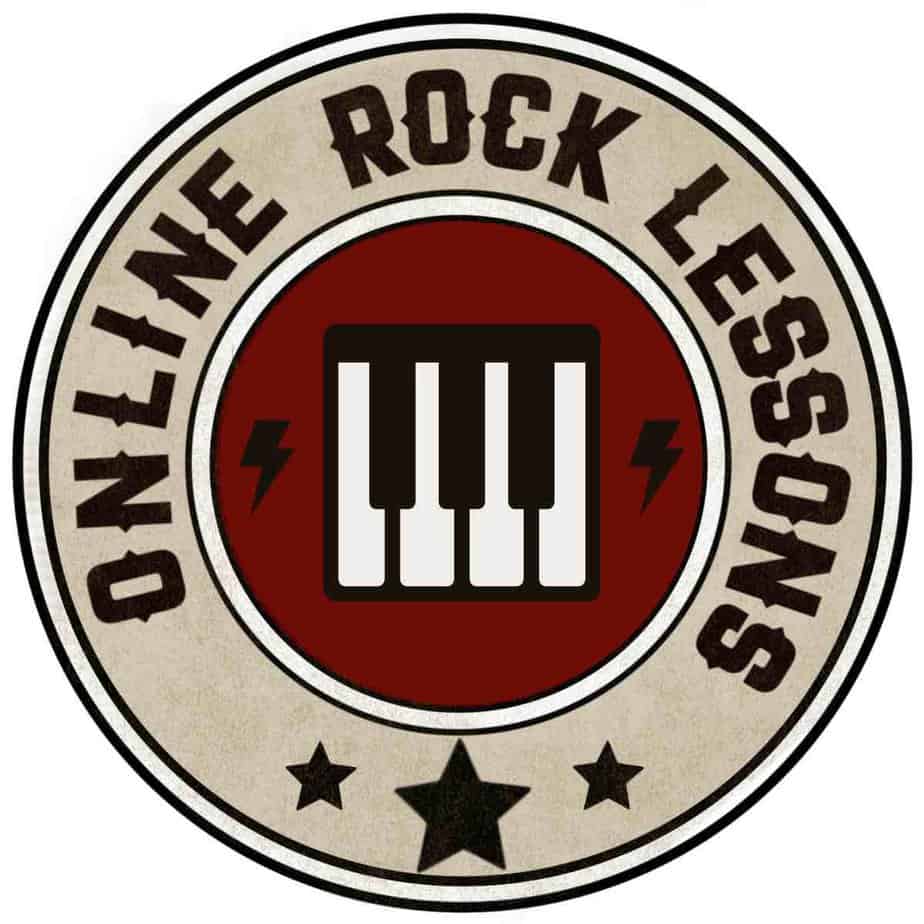In this lesson, we will learn how to transpose any chord progression in three simple steps.
We will use the chord progression I-V-vi-IV for this exercise. This progression is very common in pop music. It can be heard in songs such as Demons by Imagine Dragon and Cryin’ by Aerosmith.
The Three Steps to Finding the Chords of a Progression
Step #1 : Pairing the Right Notes with Right Degrees
We will start by learning how to pair the right notes with the right degrees. Let’s use the G major scale. This scale is composed of the notes G-A-B-C-D-E-F#-G. It has one sharp note (F#).
Now that we know the notes of the G major scale, we will pair degrees to each note. The G note is associated with the first degree, the A note is associated with the second degree, the B note is associated with the third degree, the C note is associated with the fourth degree, the D note is associated with the fifth degree, the E note is associated with the sixth degree, finally, the F# note is associated with the seventh degree. This principle is the same for all keys. For example, in the C major scale, the C note is associated with the first degree, the D note is associated with the second degree, the E note is associated with the third degree, the F note is associated with the fourth degree the G note is associated with the fifth degree, the A note is associated with the sixth degree, finally, the B note is associated with the seventh degree.

Depending on the key, the degrees will be associated with different notes. For example, the first degree of the G major scale is G whereas the first degree of the C major scale is C.
Step #2 : Finding the Chords Associated to the Different Degrees
We will now find the chords associated with the different degrees of a major scale. Let’s keep using the G major scale to demonstrate this step.
To easily find the notes of a chord, you can start by placing your first finger on the note of the first degree (G), then you skip the next note (A), you place your third finger on the next note (B), then you skip the next note (C), and finally, you place your fifth finger on the next note (D). You are now playing a G major chord. In other words, the notes of a chord are situated at a one note distance from one another. This process has to be executed on all degrees. To do so, you simply move your hand to the next note. Your first finger moves from G to A, your third finger moves from B to C and your third finger moves from D to E, you now have the notes of the chord of the second degree of the G major scale (A minor). While doing this process on every degree of the scale, keep in mind the sharp note (F#). The chords have to be composed exclusively of notes from the G major scale.

Step #3 : Apply the Chords to the Progression
Now that we know the chords associated with the degrees of the G major scale, we will apply them to the I-V-vi-IV progression. The chord of the first degree of the G major scale is G major, the chord of the fifth degree is D major, the chord of the sixth degree is E minor and the chord of the fourth degree is C major. The I-V-vi-IV progression in the key of G major is G-D-Em-C.

Transposition of the Progression
In order to transpose the progression in another key, we simply need to apply the same degrees of the desired progression to a different scale. To do so, you can execute the same three steps we did earlier.
A) E Major Transposition
Let’s transpose our progression in the key of E major. The notes of this major scale are E-F#-G#-A-B-C#-D#-E.
Step #1 :
The first step is to assign the right notes to the right degrees. In the E major key, the note associated with the first degree is E, the note associated with the second degree is F#, the note associated with the third degree is G#, the note associated with the fourth degree is A, the note associated with the fifth degree is B, the note associated with the sixth degree is C# and the note associated with the seventh degree is D#.

Step #2 :
The second step is to find the right chords associated with the different degrees of the E major scale. To do so, you can proceed with the exercise of playing the three notes starting on the note of the first degree (E), that are situated at a one note distance from one another, then slide your hand to the next notes to find all the chords associated with all the degrees.
In order to play the right chords, it is important to keep in mind that there are four sharp notes in the key of E major.

Step #3 :
The final step is to apply the chords of the E major scale to the I-V-vi-IV progression. The chords are E-B-C#min-A.

B) F Major Transposition
Let’s transpose our progression in the F major key. The notes of this scale are F-G-A-Bb-C-D-E-F.
Step #1 :
The first step is to assign the right notes to the right degrees. In the F major key, the note associated with the first degree is F, the note associated with the second degree is G, the note associated with the third degree is A, the note associated with the fourth degree is Bb, the note associated with the fifth degree is C, the note associated with the sixth degree is D and the note associated with the seventh degree is E.

Step #2 :
The second step is to find the right chords associated with the different degrees of the F major scale. To do so, you can proceed with the exercise of playing the three notes starting on the note of the first degree (F), that are situated at a one note distance from one another, then slide your hand to the next notes to find all the chords associated with all the degrees.
In order to play the right chords, it is important to keep in mind that there is one flat note in the key of F major (which is Bb).

Step #3 :
The final step is to apply the chords of the F major scale to the I-V-vi-IV progression. The chords are F-C-Dmin-Bb.

It is interesting to note that no matter what major key you are playing in, the quality of the degrees stays the same. This means that the first degree is always associated with a major chord, the second and third degrees are always associated with a minor chord, the fourth and fifth degrees are always associated with a major chord, the sixth degree is always associated with a minor chord and the seventh degree is always associated with a minor flat 5 degree. Remembering this is key to getting better at transposing.
You now know how to transpose chord progressions in any key. It is now time to practice!
Text Transcription by Andreane Boucher

Founder of Online Rock Lessons, Marine is the keyboardist for Uncle Kracker, Corey Hart and Highway Hunters.
With over 20 years of experience in show business, Marine is launching the first Canadian Music School dedicated to rock and blues lovers.






Questions